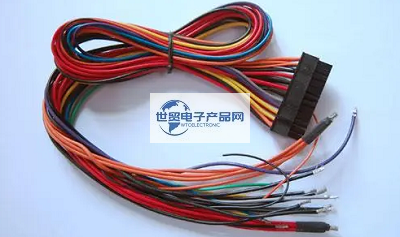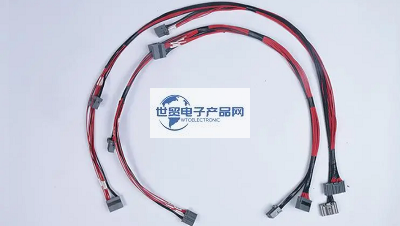Categorization:Product Information
Automobile wires, also known as low-voltage wires, are different from ordinary household wires. Generally, household wires are copper single-core wires, which have a certain hardness. Automobile wires are all copper multi-cored flexible wires, some of which are as thin as hair, and several or even dozens of soft copper wires are wrapped in plastic insulated pipes (polyvinyl chloride), which are soft and not easy to break. Because of the particularity of automobile operation, the process of automobile wiring harness processing is also more special than other general wiring harnesses. Systems for manufacturing automotive wiring harnesses are roughly divided into two categories: 1. Differentiated by European and American countries, including my country: the TS16949 system is used to control the manufacturing process. 2. Mainly Japan: such as Toyota and Honda, they have their own systems to control the manufacturing process. With the increase of automobile functions and the widespread use of electronic control skills, there will be more and more electrical components and wires, and the wiring harness will become thicker and heavier. Therefore, advanced automobiles have introduced CAN bus equipment and selected multiplex transmission system. Compared with the traditional wiring harness, the multi-channel transmission equipment greatly reduces the number of wires and connecting plug-ins, making wiring easier.
-------------------------------------------------------------------------------------------------
Commonly used standards for wires in commonly used automotive wiring harnesses include wires with nominal cross-sectional areas of 0.5, 0.75, 1.0, 1.5, 2.0, 2.5, 4.0, 6.0 and other square millimeters (the nominal cross-sectional areas commonly used in Japanese cars are 0.5, 0.85, 1.25, 2.0, 2.5, 4.0, 6.0 and other square millimeters), each of which has an allowable load current value and is equipped with wires of electrical equipment with different power. Taking the vehicle wiring harness as an example, the 0.5 standard wire is suitable for surface lights, indicator lights, door lights, ceiling lights, etc.; The 0.75 standard line is suitable for license plate lights, front and rear small lights, brake lights, etc.; 1.0 standard line is suitable for turn signals, fog lights, etc.; 1.5 Standard line is suitable for headlights, horns, etc.; Main power lines such as generator armature lines, ground lines, etc. require 2.5 to 4 square millimeters of wires. This only refers to general cars. The key depends on the maximum current value of the load. For example, the ground wire and positive power wire of the battery are special car wires used alone, and their wire diameters are relatively large, at least more than ten square millimeters, so these "Big Mac" wires will not be woven into the main harness. Before placing the wiring harness, the wiring harness diagram must be manufactured in advance. The wiring harness diagram is different from the circuit schematic diagram. A circuit schematic diagram is an image that expresses the communication between various electrical parts. It does not reflect how the electrical parts are connected to each other, and is not affected by the standard shape of each electrical component and the spacing between them. The wiring harness diagram must take into account the standard shape of each electrical component and the spacing between them, and also reflect how the electrical components are connected to each other. After the technicians of the wiring harness factory make the wiring harness wiring board according to the wiring harness diagram, the workers cut and arrange the wiring according to the rules of the wiring board. The main wire harness of the whole vehicle is generally divided into engine (combustion, electronic injection, power generation, starting), surface, lighting, air conditioning, auxiliary electrical appliances and other parts, including main wire harness and branch wire harness. There are multiple branch wiring harnesses in a main vehicle harness, just as the stalks and branches of a tree are the same. The main harness of the vehicle often takes the surface plate as the central part and extends from front to back. Because of length contact or equipment convenience, the wiring harnesses of some cars are divided into front wiring harnesses (including surface, engine, headlight assembly, air conditioner, battery), rear wiring harnesses (taillight assembly, license plate light, trunk light), and roof wiring harnesses (doors, ceiling lights, audio speakers), etc. Each end of the wire harness will be marked with sign numbers and letters to indicate the connection policy of the wire. The operator can see that the sign can be correctly coupled to the corresponding wires and electrical equipment, which is especially useful when repairing or replacing the wire harness. Together, the colors of wires are divided into single-color wires and two-color wires. There are also rules for the use of colors, which are generally customized standards by car manufacturers. Our country's operating standards only regulate the main color. For example, the rule black is specially used for ground wires, and the red is used for power cords, which should not be thick and turbid. The harness is wrapped with woven thread or plastic adhesive tape. For safety, processing and repair convenience, woven thread wraps are now selected and are now wrapped with adhesive plastic tape. For the connection between wire harnesses and between wire harnesses and electrical components, choose connecting plug-ins or wire lugs. The coupling plug is made of plastic and is divided into a plug and a socket. The wire harness is connected with the wire harness by a coupling plug, and the coupling plug or a wire lug is used for connecting the wire harness with the electrical component. Materials, automobiles also have very strict requirements for materials: including their electrical functions, material emission, temperature resistance, etc., which are higher than general wiring harnesses, especially those involving safety: such as steering control systems, brakes, etc. The wiring harnesses of important components have stricter requirements.
---------------------------------------------------------------------------------------------------------------------------------------------------------------------------------------------------------------------------------------------------------------------------------------------------------- If you have related [connector wiring harness and cable production] purchasing/purchasing needs or want to purchase/understand which connector wiring harness and cable product solutions we can provide, please contact our business staff below; If you have related sales/resources and promotion needs of [Connector Wiring Harness and Cable Production], please click "→ Business Cooperation ←" to negotiate with a dedicated person!